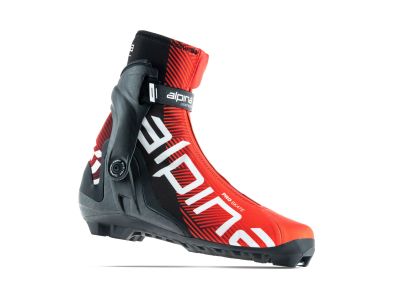Choosing the right cross-country ski boots is crucial to comfort, performance, and overall enjoyment of your cross-country skiing experience. Here's a quick guide to help you make the right choice:
- Boot type: Determine the type of cross-country skiing you will be doing, whether it is classic cross-country or skate. Different types of boots are optimized for each technique.
- Boot compatibility: Make sure your boots are compatible with your cross-country ski bindings. Different boots are designed for NNN, SNS or Prolink bindings, so check the specifications to make sure the boots match your equipment.
- Boot flex: Consider the “flex” of your boot based on your skill level and skiing style. Stiffer boots provide better support for advanced skiers, while softer boots are more accommodating and suitable for beginners.
- Closure system: Look for boots with an effective closure system such as laces, straps, or a combination of both. A secure closure ensures stability and minimizes heel lift while skiing.
By considering these factors, you can find the ideal pair of cross-country ski boots that match your skill level, skiing style, and the conditions you'll face on the trails.
How to choose the right size of cross-country ski boots?
Choosing the right size of cross-country ski boots is crucial for comfort, performance, and overall enjoyment of skiing. Here is a guide to help you determine the right size:
- Measure your foot: Start by accurately measuring your foot. Using a Brannock device or ruler, measure the length of your foot from the heel to the longest toe. Measure both feet, as they may be slightly different lengths.
- Consider your foot width: Cross-country ski boots come in a variety of widths, from narrow to wide. To determine your foot width, measure the widest part of your foot. Some brands offer width options, such as “S” (narrow), “M” (medium), or “L” (wide).
- Check the manufacturer's sizing chart: Each brand may have its own sizing chart, so check the manufacturer's website or check the packaging for sizing information. Compare your foot measurements to the chart to determine the recommended size range.
- Try on boots: Try on different brands and models of cross-country ski boots. Wear appropriate ski socks. It's best to try on boots later in the day when your feet are a little more swollen, as this mimics skiing conditions.
- Toe space: When trying on cross-country ski boots, make sure you have a little toe space at the front of the boot, about half a centimetre. This space allows for better blood circulation and prevents discomfort or cold toes while skiing.
- Assess the fit of your boots: Put on your boots and lace them up or use a lacing system. Walk around the store, flexing your ankles and simulating skiing movements to assess how your boots fit. Boots should be snug but not too tight, with minimal heel lift and no pressure points or discomfort.
Remember that sizing can vary slightly between brands, so it's essential to try on different options and check the manufacturer's sizing chart for each specific brand. Taking the time to find the right size will ensure a comfortable and enjoyable cross-country skiing experience.
Can I use any binding with my cross-country ski boots?
Cross-country ski boots are typically designed to be compatible with specific binding systems, such as NNN (New Nordic Norm) or SNS (Salomon Nordic System). It's important to make sure your boots and bindings are compatible, as using the wrong combination can result in poor performance or even damage to your equipment.
How to care for your cross-country ski boots?
To extend the life of your cross-country ski boots, it is important to take proper care of them. Wipe off any dirt and let them air dry after each use. Avoid storing them in damp or wet environments. It is also recommended to treat your boots regularly with a waterproofing spray or wax to maintain their water resistance.

